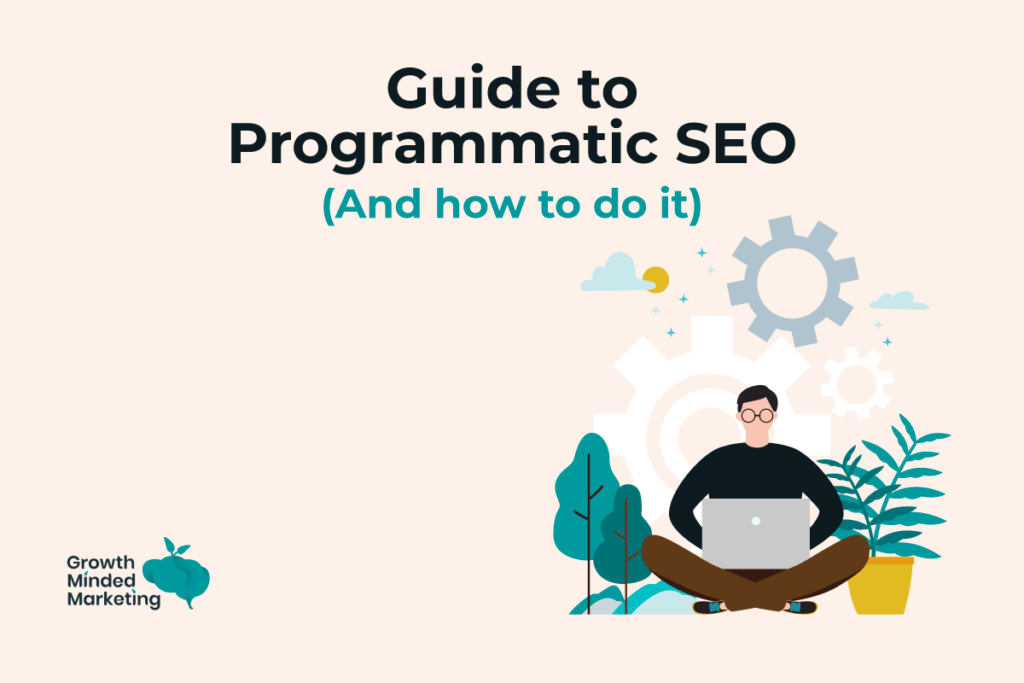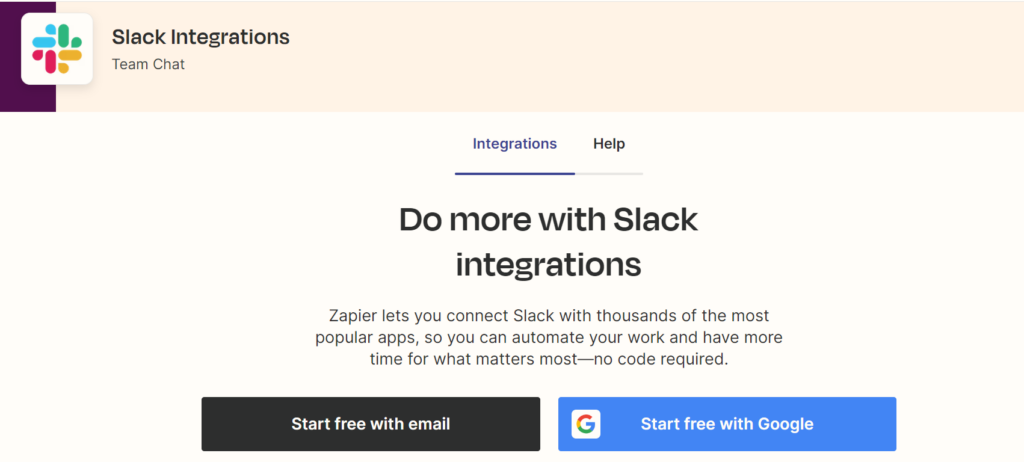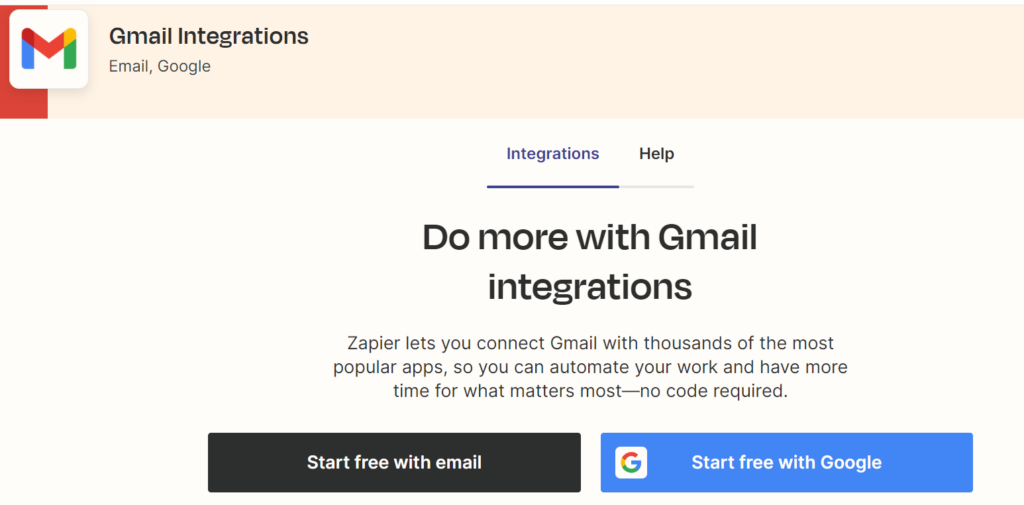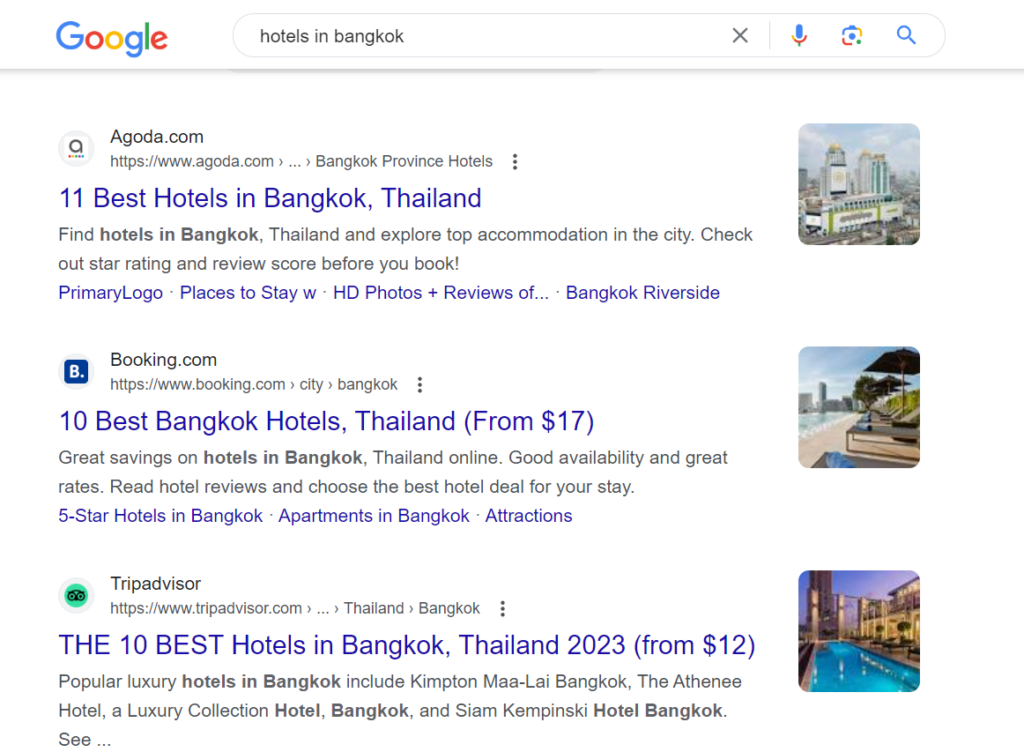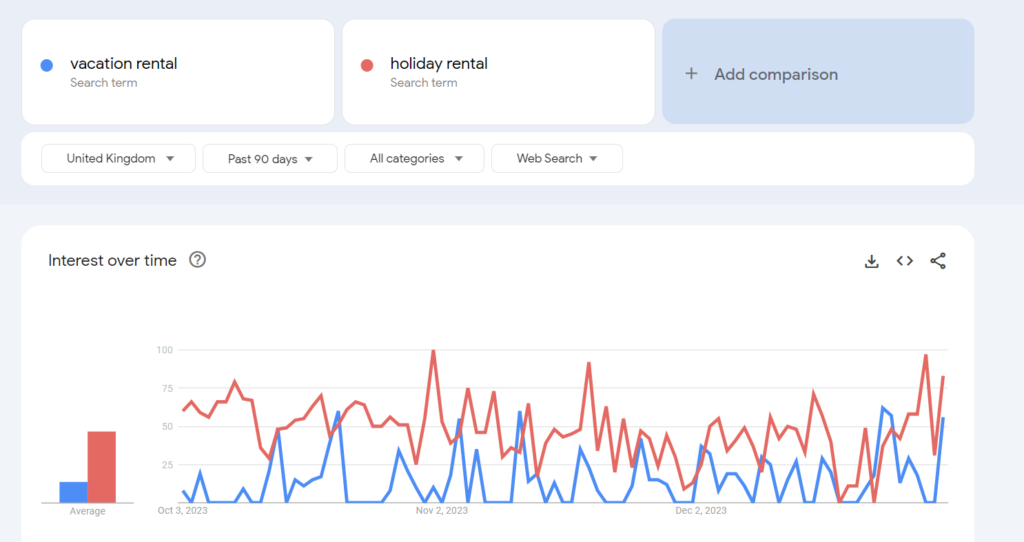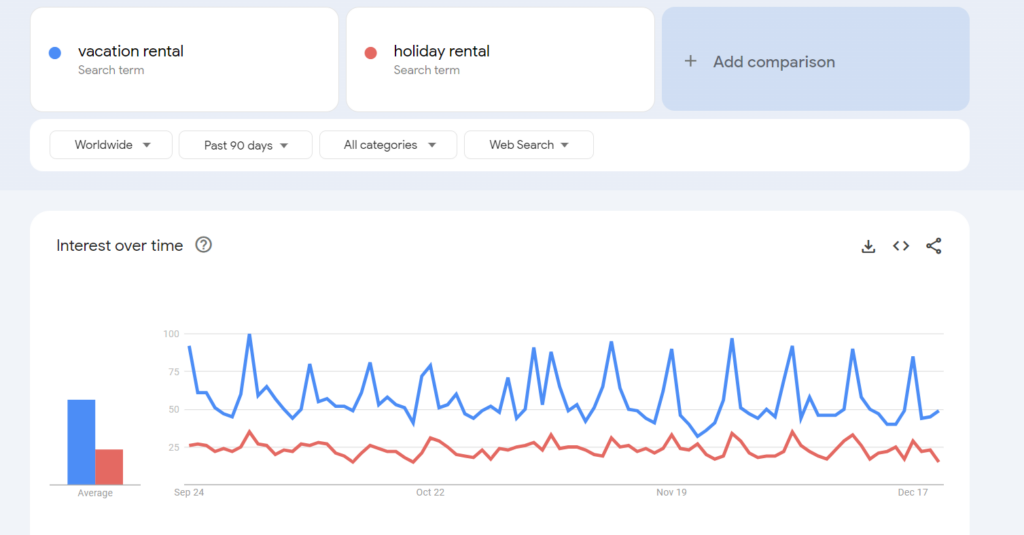Businesses like Wise drive more than 4 million organic visitors a month via programmatic SEO. It has around 15K landing pages that target closely related keywords around ‘currency converter’. These pages use a single template with similar content and drive millions of visitors for Wise.
Brands like Zapier, Yelp, Tripadvisor, Zillo and several others are using programmatic SEO to drive an insane number of organic visitors for thousands of search queries with template pages.
Your SEO strategy is incomplete without programmatic SEO. If you aren’t doing it, you’re not even in the game.
Trying to figure out where and how to begin? We’ve got you covered.
This article explores programmatic SEO and how you can use it for your website in 4 steps.
Table of Contents
ToggleWhat is programmatic SEO?
Programmatic SEO (also known as pSEO) is the process of creating keyword targeted web pages automatically. The pages use a template and a few elements that automatically change based on keywords or other criteria.
Businesses create hundreds and thousands of targeted landing pages on complete automation using programmatic SEO. Zapier has more than 800K programmatic landing pages that follow the same template. Here’s an example:
Zapier has these landing pages for all the apps that it supports and these all pages have the same template and style. Here’s an example of how programmatic SEO pages rank in SERPs:
The results by Agoda, Bookings.com, and Tripadvisor are programmatic landing pages that they have created for hotels in almost all cities throughout the world.
These sites have used a single template to target thousands of keywords that are in this format: Hotels in [city name]:
Programmatic SEO helps you reach your target audience by creating automated targeted pages in bulk. You don’t need heaps of resources to set up a programmatic SEO campaign, it’s either fully or partially automated and this is what makes it best.
Find out how our SEO management services can help your business grow.
How to do programmatic SEO?
The idea is create landing pages at scale to target a range of keywords. Programmatic SEO isn’t just limited to creating landing pages, rather the purpose is to drive organic traffic by creating content that targets specific keywords.
You have to follow a systematic approach to use programmatic SEO for your website. Follow these steps to get started with it:
Step 1: Keyword research
The success of programmatic SEO depends on the keywords you are targeting. You have to find similar keywords with slight variations that can be targeted with a template webpage.
Hotels in [city name] is a perfect example of keywords for programmatic SEO. You can target thousands of keywords with a single page with similar content for a series of keywords by replacing city names.
If the keywords aren’t related, you’ll have to create different web pages and different content, and that’s where programmatic SEO won’t be as effective.
Keyword research is the backbone of programmatic SEO.
What keywords you find for programmatic SEO should be based on your site’s ability to rank for the keyword. If your site has good domain authority and can rank for keywords with low and medium difficulty without any backlinks, you should prioritise for low and mid difficulty keywords.
But this doesn’t mean you should ignore competitive keywords outright. You should consider targeting competitive keywords if it’s cost-effective to create landing pages. You might rank well even with a low authority site.
This is because you don’t have to build links to programmatic pages and it’ll require a lot of resources to build backlinks for hundreds of pages. You need to identify keywords your site has the potential to rank for without backlinks.
That’s what programmatic SEO is all about.
Here’s what type of keywords you need:
- Low or mid competition keywords that are easy to rank without backlinks
- Transactional or commercial search intent
Use a keyword research tool to analyse your competition to get an idea of what type of keywords they are targeting. This will help you identify keywords that are suitable for programmatic SEO.
You can read more about keyword research in our What are keywords in SEO? post.
Step 2: Identify head terms and trends
A head term is a broad keyword category that you want to rank for. In the case of Zapier, the head term is “integration” and for Tripadvisor, the head term is “hotel”.
Head terms are broad keywords that define how people in your niche find a product or service. It is the most used term that your ideal customers use. For example, Wego has the option to choose between cheap airline tickets vs. cheap flights for programmatic SEO. The right head term for Wego is one that its target audience uses the most.
How do you know what head term your audience uses?
Monthly search volume is one way to choose the most popular head term. A high monthly search volume indicates that a search term is popular. Google Trends is another way to find what words and phrases people are currently using.
Here’s an example:
Globally, people tend to use vacation rental more than holiday rental and the trend is consistent for at least the past 90 days. This is how you need to identify the right head term for programmatic SEO.
In the UK, however, holiday rental is more popular:
It verifies the importance of understanding your target market and what search terms it uses. Use location-based filters to better understand head terms.
Keyword research from Step 1 will help you identify head terms for your business. You need to use Analytics, Google Trends, and keyword research tools to pick the right head terms.
Step 3: Merge the head term with your modifiers
A ‘modifier’ is a term that’s added before or after a head term, that converts the head term into a highly specific keyword (which might be a long-tail keyword depending on the length of the head term and modifier).
For Tripadvisor, hotel is the head term and city name is a modifier. Integrations is the head term for Zapier and the tool name is a modifier.
Modifiers change your head term into a keyword and that’s what you target using programmatic SEO. Combining head terms with relevant modifiers will result in a huge keyword list and you’ll be able to create a landing page template based on it.
What modifiers you have to use depends on the keyword research and search intent. Not all head terms and modifiers need to have search volume and interest. Most of the keywords you target with programmatic SEO won’t have any search volume. The idea is to target hundreds of keywords and cover a complete niche that’ll have a synergy effect leading to significant organic traffic.
So, here’s how actual keywords for programmatic SEO should look like:
Head term + Modifier
You can prepare this extensive list of keywords in Excel or Google spreadsheet for the head terms you identified in Step 2.
Step 4: Create landing pages
Once you have the complete list of head terms and modifiers (aka keywords), you need to create landing pages. You need to create a landing page for each keyword you target for your programmatic SEO campaign.
You need a landing page template with a definitive structure. Each landing page for a keyword should be unique in some way. You can use unique metadata, heading tags, product images, CTAs, and other details. Most of the content, however, remains the same.
Zapier, for example, only changes the name of the tool in its programmatic SEO landing pages: all the other content, including CTAs remain the same:
That’s how you should create a basic template and change each landing page based on the target keyword. This happens automatically once you have a landing page template. You need to upload the keyword sheet with the landing page template and you’ll have all pages up and running.
Talk to a developer to implement a landing page template with target keywords to get your campaign live:
Once your landing pages go live, search engines will need some time to crawl and index all of them. Once your landing pages rank for the target keywords, you’ll start receiving highly targeted organic traffic from all these pages.
Repeat the process for other head terms.
3 things to keep in mind when doing programmatic SEO
Anything automated, technical, and involves SEO has its pitfalls. You have to be very cautious when doing pSEO as a tiny mistake can ruin your site’s organic traffic and it takes months to get back on track.
Here are 3 most important things you have to be cautious of when setting up and running a programmatic SEO campaign:
1. Avoid doorway pages
A doorway page, according to Google, is a page that is created to rank for specific and similar keywords and it is used to direct visitors to another page. A doorway page isn’t useful and serves the purpose of redirecting visitors to another page.
Google considers doorway pages as spam and such pages (and sites) might lose ranking or might not appear in searches at all.
You can avoid creating doorway pages by making landing pages unique and useful. This means you have to have a decent amount of unique and useful content for each landing page and each one of them targets a specific intent.
Additionally, you need to focus on UX. The visitors should, ideally, get all the information they need on the page they land. If the landing page has poor UX and it redirects visitors to another page (for sign-up or more info), that’s an example of a doorway page.
The reason why Zapier, Tripadvisor, and hundreds of other sites are ranking for thousands of similar keywords with template pages is that they offer visitors what they are looking for. They direct visitors to relevant pages where necessary.
Now compare this with a website that directs all the visitors from hundreds of its programmatic SEO landing pages to its contact us page for lead generation. That’s a perfect example of doorway pages and that’s something you need to avoid.
Follow these two simple rules to avoid doorway pages:
- Make useful and unique landing pages that answer the search intent of the keyword(s) they are targeting (more on this in the section below)
- Improve the UX by providing visitors with all the answers they need on the landing page
2. Identify the right intent
One way to avoid doorway pages is to understand search intent.
When you know the intent of the searcher, you’ll be in a better position to improve UX and address the query accurately on the landing page. Understanding search intent helps you meet user expectations which leads to better UX.
The right way to identify search intent for the keywords is by analysing existing content in SERPs. For example, if Google is ranking ecommerce pages for a certain keyword, it shows people who search for this keyword are interested in buying a product. If you end up writing a detailed blog post on this keyword, it is highly unlikely that you’ll make it to the first page.
Why?
Because Google already knows that searchers aren’t looking for content, rather they are interested in buying a product.
That’s how search intent helps you improve ranking.
Programmatic SEO generally works best for transactional and commercial intent, because informational and navigational intents are hard to cover with template landing pages.
It is also important to understand page layouts and structures that Google is already ranking for your target keywords. If, for instance, 5 out of 10 pages on the first page have a similar layout, you need to stick with it as it best meets searchers’ intent .
Doing something unorthodox will most likely backfire (but there’s no harm in trying new things, just do it with a few pages first to be safe)
You must be 100% sure of the intent and page layout that Google and users love before pushing hundreds of pages live for your programmatic SEO campaign.
3. Make sure your internal linking is on point
Internal links play a crucial role in programmatic SEO success. It is impossible to acquire backlinks for all the landing pages. You’ll need a lot of resources and it won’t look natural.
Your best bet is to use internal links to pass link juice from relevant pages to the landing pages.
Zapier, for example, has linked to its apps page from its homepage (DR 91) which passes some serious link juice to its landing pages.
Then all the landing pages are interlinked. If you are on a template landing page on Zapier, you can navigate to related landing pages that are part of programmatic SEO and that’s how Zapier strategically distributes link juice among relevant landing pages.
Since template landing pages for programmatic SEO are highly relevant to one another, it makes sense to interlink them. This helps you improve ranking and UX. Visitors can navigate to relevant pages and would end up spending more time on your site.
Having a well-thought-out internal linking strategy for programmatic SEO is necessary. You should link to relevant landing pages from popular, high authority pages (not just the home page) to improve rankings naturally.
Find out how our SEO management services can help your business grow.
Conclusion
Search engine optimisation isn’t easy. It needs regular monitoring and maintenance. You have to stay at the top of news and trends to avoid getting slapped by a Google search update.
Programmatic SEO is an altogether different ballgame. It requires technical knowledge, in-depth SEO expertise, market research, design and development experience, and a deep understanding of Google’s search policies and updates. A single wrong move and your website might end up as spam and might lose traffic due to thin content.
Brands that do programmatic SEO right fall in love with it because it has a massive ROI and provides a massive competitive advantage.
Our team’s experience in technical SEO makes us capable of planning, executing, and monitoring programmatic SEO campaigns at scale successfully.
To get the most out of programmatic SEO and to set up everything correctly, don’t hesitate to book a call with one of our growth strategists for a free strategy session.

Find out how our SEO management services can help your business grow in 2024

